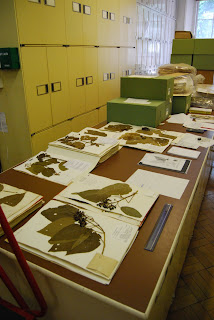After finishing up my stint at RHS Wisley, it was finally time to move back to London for the duration of my scholarship. My next stop was the Royal Botanic Gardens at Kew, probably the most notable garden in all of the UK, and a UNESCO World Heritage Site. It was an honor just to visit, and actually getting to work in the laboratories was the chance of a lifetime.
In the gardens, Kew offers a chance to visit one of the world's oldest Victorian palmhouses, a cutting edge and award-winning Alpine glass house, one of the smallest British royal palaces (Kew Palace), several museums and conservatories, a great pagoda (designed by Sir William Chambers), several galleries, a tree top walkway, a water lily house, and the list goes on and on.
Kew also maintains one of the largest herbariums in the world, as well as one of the largest seed banks in concert with the Millennium Seed Bank project at Wakehurst Place. In addition, Kew houses one of the largest libraries in the worlds archiving collections of botanical books, illustrations, photographs, periodicals, etc.
Kew is simply a monumental garden, and must be visited to be appreciated. As a student at Kew, I was lucky enough to visit some of the behind-the-scenes areas of Kew. One of the highlights was visiting the herbarium housing the mycology collection, and getting to hold the sample of Penicillium fungi that Alexander Fleming used to discover Penicillin. Another highlight was working for the Conservation Biotechnology Unit where I assisted in growing endangered or near extinct British orchids in tissue culture.
My entire experience at Kew was unforgettable, and I hope to return soon one day as there is so much of the garden left to explore.



































No comments:
Post a Comment